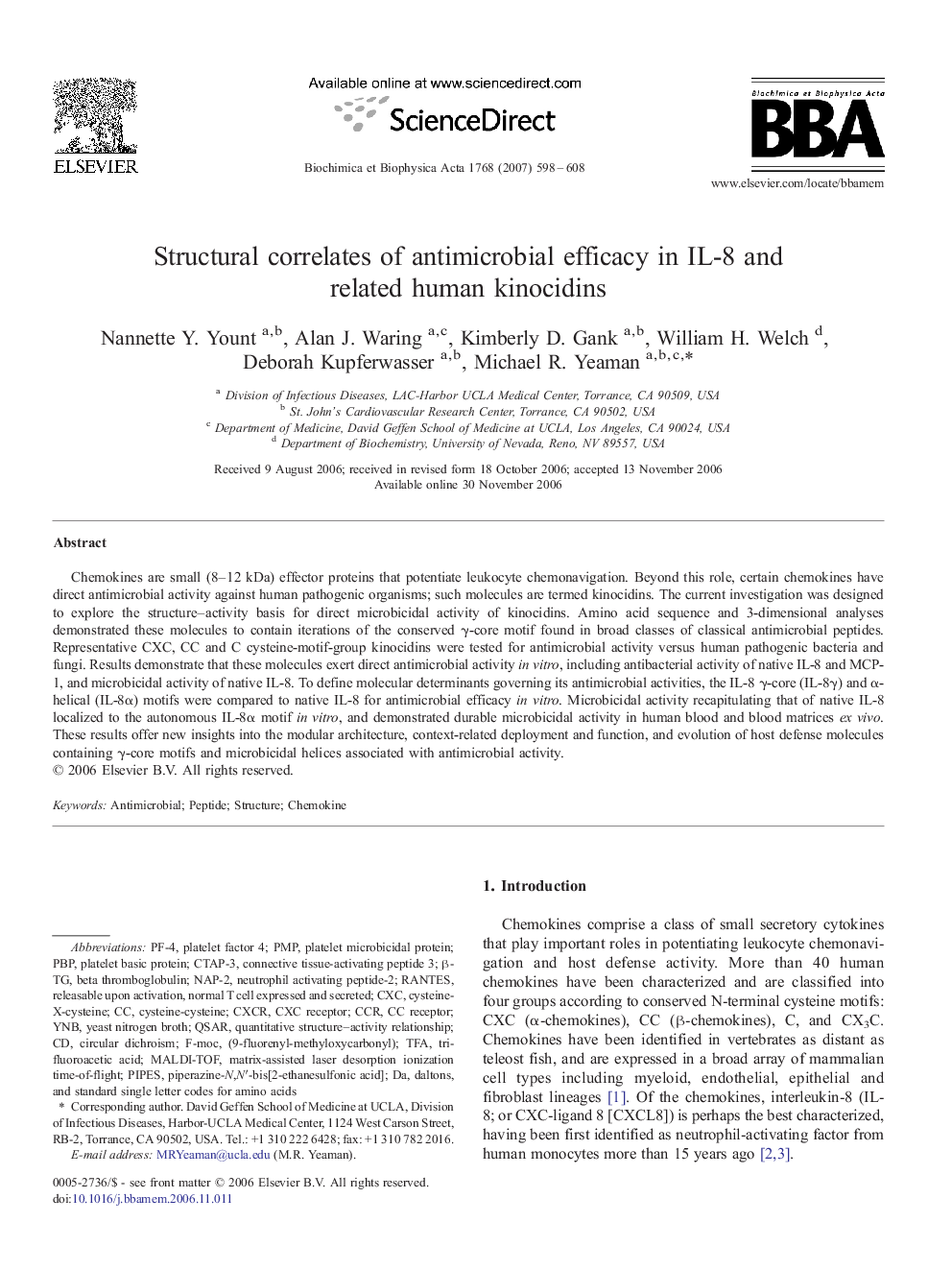| Article ID | Journal | Published Year | Pages | File Type |
|---|---|---|---|---|
| 1945859 | Biochimica et Biophysica Acta (BBA) - Biomembranes | 2007 | 11 Pages |
Chemokines are small (8–12 kDa) effector proteins that potentiate leukocyte chemonavigation. Beyond this role, certain chemokines have direct antimicrobial activity against human pathogenic organisms; such molecules are termed kinocidins. The current investigation was designed to explore the structure–activity basis for direct microbicidal activity of kinocidins. Amino acid sequence and 3-dimensional analyses demonstrated these molecules to contain iterations of the conserved γ-core motif found in broad classes of classical antimicrobial peptides. Representative CXC, CC and C cysteine-motif-group kinocidins were tested for antimicrobial activity versus human pathogenic bacteria and fungi. Results demonstrate that these molecules exert direct antimicrobial activity in vitro, including antibacterial activity of native IL-8 and MCP-1, and microbicidal activity of native IL-8. To define molecular determinants governing its antimicrobial activities, the IL-8 γ-core (IL-8γ) and α-helical (IL-8α) motifs were compared to native IL-8 for antimicrobial efficacy in vitro. Microbicidal activity recapitulating that of native IL-8 localized to the autonomous IL-8α motif in vitro, and demonstrated durable microbicidal activity in human blood and blood matrices ex vivo. These results offer new insights into the modular architecture, context-related deployment and function, and evolution of host defense molecules containing γ-core motifs and microbicidal helices associated with antimicrobial activity.
